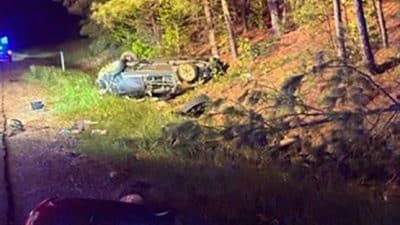
“This historic initiative will provide significant ecological and economic benefits for years to come,’’ McDonnell said. “This is a win for the health of the Chesapeake Bay, for oyster-lovers and for our hard-working watermen.”
According to the Virginia Marine Resources Commission, every $1 spent by the state to plant oyster shells yields $7 in economic benefits in the form of larger harvests and increased jobs for oyster harvesters, shuckers, packers and shippers when the oysters reach market size in three years.
This year’s replenishment program, being conducted by the Virginia Marine Resources Commission, is the largest ever undertaken in Virginia waters, due to a record $2 million appropriated in the budget by the governor and the Virginia General Assembly. The oyster replenishment operation involves the spreading of empty oyster shells on state-owned public oyster grounds to provide habitat so naturally occurring oyster larvae can attach to the shells during spawning and grow to form new adult oysters.
“By the time this year’s replenishment initiative concludes at the end of July, an anticipated 1 million bushels of empty oyster shells will have been deployed on public oyster grounds,” said Natural Resources Secretary Doug Domenech. “That’s roughly 1 billion individual empty oyster shells, enough to fill approximately 4,000 dump trucks.”
This year’s oyster replenishment program began in May, with the spreading of an estimated 200,000 bushels of oyster shells obtained from oyster shucking houses on public oyster grounds in the Rappahannock, Piankatank and Great Wicomico Rivers.
Industrial oyster shell-mining equipment is now in place and is mining a fossilized oyster shell deposit located roughly 40 feet beneath the James River near Jamestown. The fossil shells are being loaded into barges and floated downriver to public oyster grounds in the lower James River and deployed on some of the historically best oyster grounds in the Commonwealth.
The mining operation began July 3. Over the next few weeks, barges containing 800,000 bushels of mined oyster shells will be deployed on public oyster grounds in the James River, as well as in Mobjack Bay, the York River and off Tangier Island.
“The replenishment program provides substantial benefits for the environment and for the economy,” said Anthony Moore, Deputy Secretary for Chesapeake Bay Restoration. “A single adult oyster can purge up to 50 gallons of water a day. Oyster reefs provide important forage and refuge habitat for invertebrates, as well as juvenile crabs and finfish species.”
“These empty oyster shells will become the homes for a new generation of oysters and will remain untouched for several years as they grow to adulthood and spawn another generation of oysters before they can be harvested,” said Jack Travelstead, Virginia Marine Resources Commissioner. “It is important they be harvested at that point because otherwise they are susceptible to the two non-native diseases, Dermo and MSX, which kill adult oysters but doesn’t harm people. We don’t want to see these oysters wasted to disease.”
General Fund appropriations for oyster replenishment funding have ranged from zero to as much as $1.3 million over the past two decades, and have never surpassed the $2 million allocated to the program in the current state budget. The record-breaking appropriation was proposed by McDonnell and approved by the Virginia General Assembly.
Over the past decade, the oyster harvest in Virginia has increased ten-fold, from 23,000 bushels in 2001 to an estimated 250,000 bushels in 2012. In that time, the dockside value of the oyster harvest increased from $575,000 to more than $8.26 million. Last year’s oyster harvest in Virginia was the largest since 1989.
The ripple effects through the economy from last year’s oyster harvest resulted in roughly $22 million in economic value, using a multiplier of 2.63 on a dockside value of more than $8.26 million, a formula established by the late Dr. James Kirkley, a Virginia Institute of Marine Science seafood industry economist.
Oyster replenishment is just one of several initiatives undertaken by McDonnell to improve the health of the Chesapeake Bay and its tributaries. This year’s budget, signed by the governor, included over $220 million in clean water related funding, one of the largest commitments ever.










